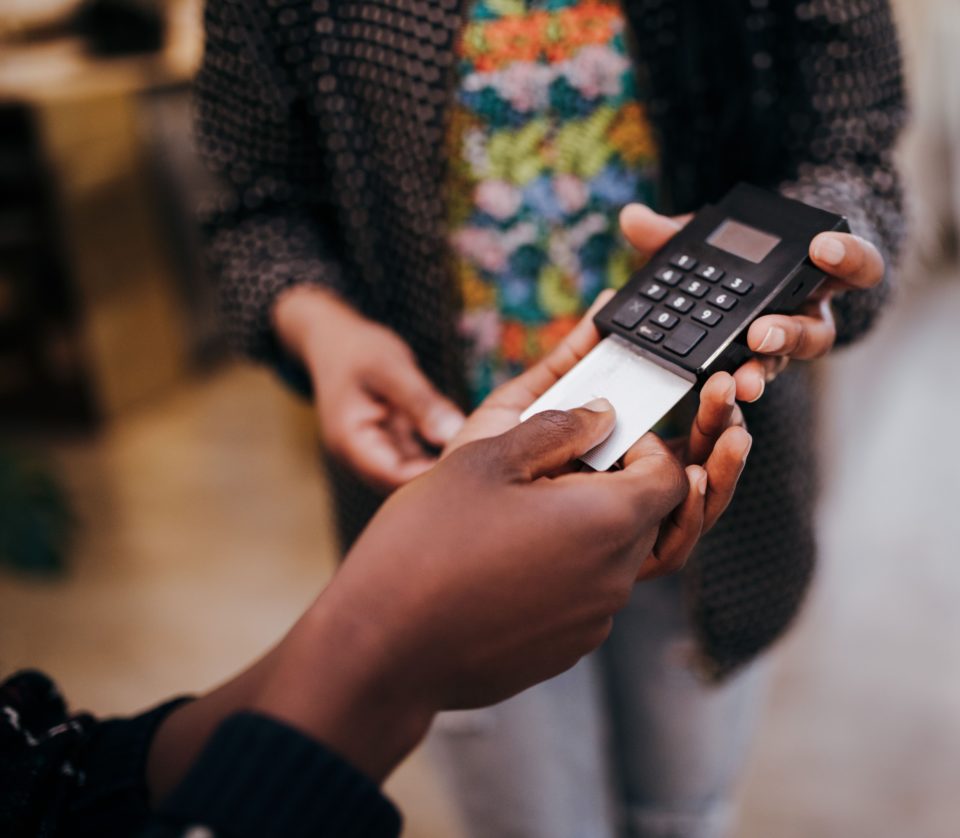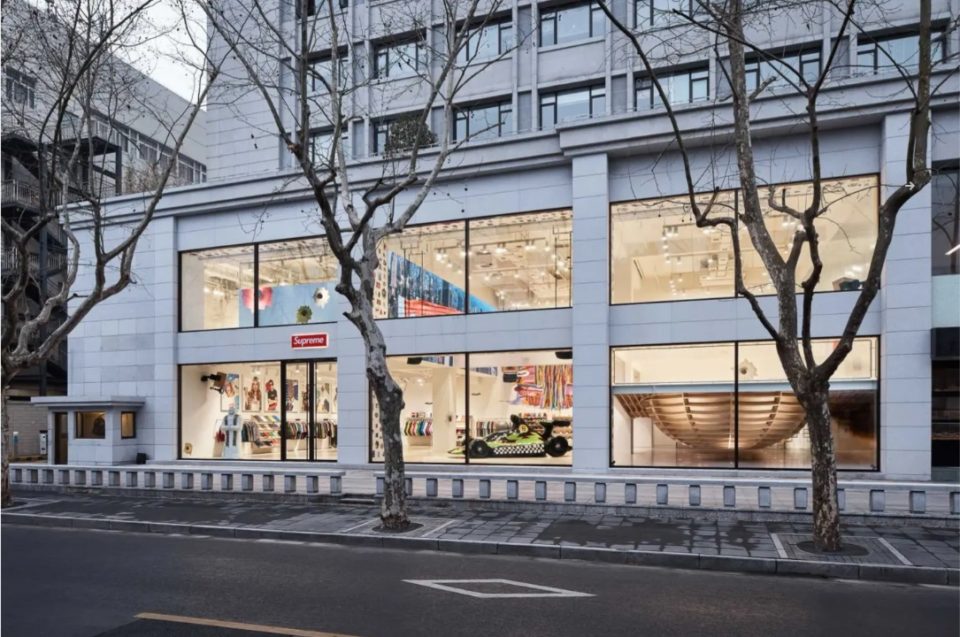The store where nothing is for sale – why The Inutilious Retailer gave everything away for free
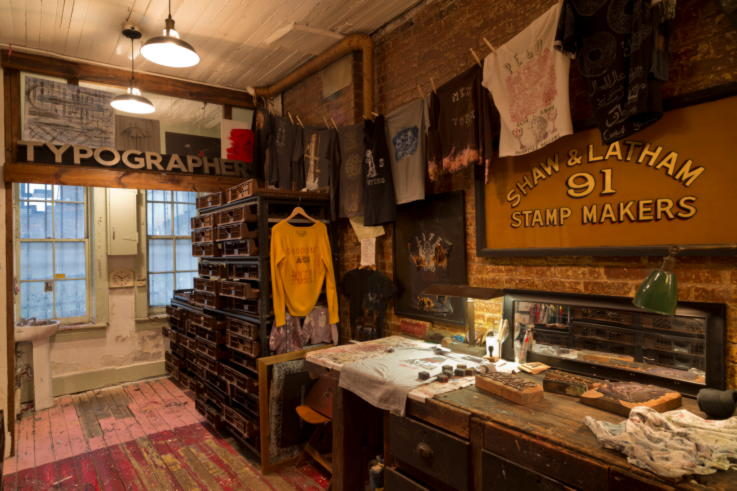
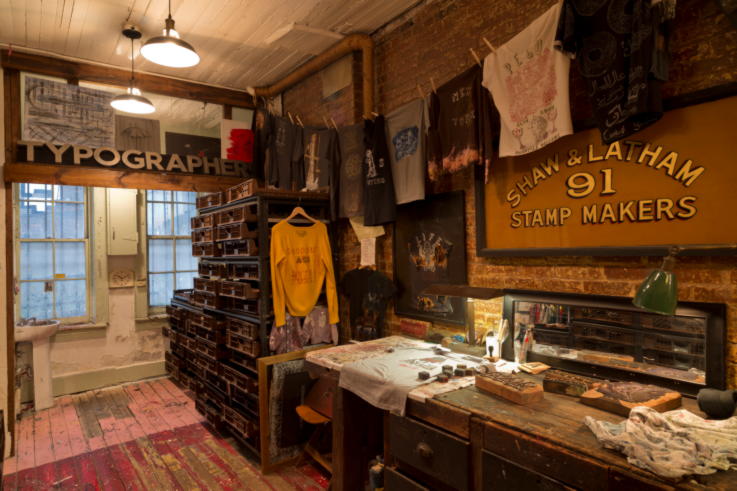
When it comes to unusual retail models, a store that takes no money and gives away its stock is up there. The Inutilious Retailer was the brainchild of Adrian Wilson – part art project, part retail experiment, part retirement plan.
With the store having closed its doors last year, we spoke to Wilson about the idea behind the fascinating project. Plus, the difference between cost and value and why retail should focus on the customer journey beyond the sale.
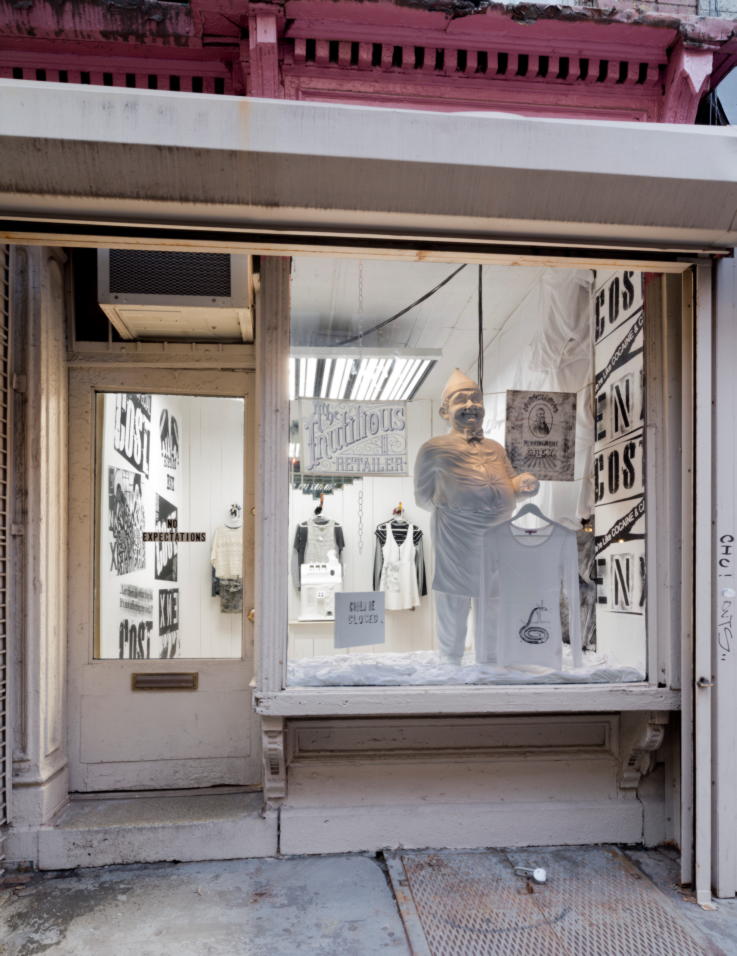
Can you tell us about The Inutilious Retailer project?
The Inutilious Retailer had so many purposes that even looking back on it, I find it hard to pin down what its purpose was and how it became a reality. I definitely thought it would be provocative to open a free shop in the epicentre of capitalism. To question why we are encouraged to believe happiness revolves around money and consumerism.
I also enjoyed seeing those old guys sat outside shops in France or Italy doing nothing all day. Just watching the world go by and chatting with friends. It seemed like an ideal type of retirement, so I thought why not try it out now, while I could put all the expenses through my photography business. If I found it boring, I had 15 years to come up with another retirement plan.
More than all that, it seemed a fantastically ridiculous idea and had many reasons why and very few why not.
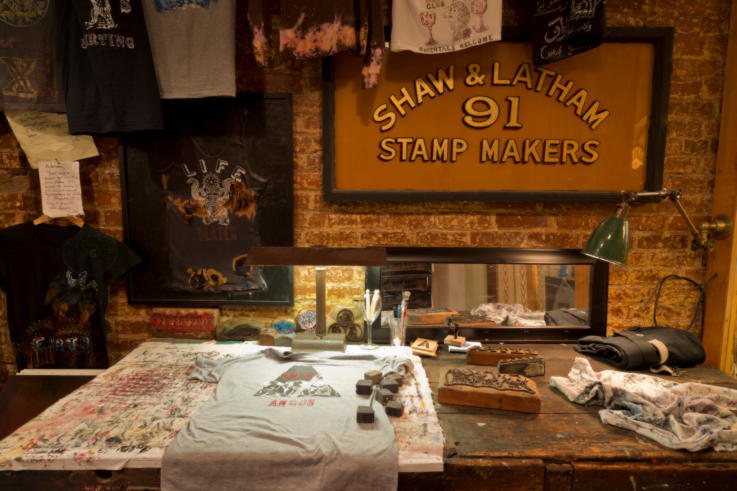
Where did the idea of a store that gives away its products for free come from?
I am the cliché male shopper. I don’t find any pleasure in it. Anything I buy is done in a ‘surgical strike” manner after being delayed until the very last minute.
Ironically, for the last 30 years my career has been as a photographer of interiors, including many high-end stores. I love retail design over corporate, leisure or residential because it has a definite purpose. To entice and encourage the shopper to buy something.
A store is full of visual tricks whose sole purpose is to subtly guide people toward the till, product and credit card in hand. Hundreds of those concepts had fermented in my brain over the years and were about to combine with several other major events in my life.
While I was in my 20’s I had managed to salvage a couple of thousand Victorian printing blocks when the old cotton warehouses of Manchester were being converted into housing. By 2005 I had moved to New York and a friend of mine who works in fashion saw the blocks. We devised a project whereby we would create autobiographical t-shirts, then give them anonymously to random New Yorkers.
The concept was to show how stupid it was that art created on cotton canvas had complete legal protection and value. Yet if that art was created on clothing it had none.
As well as giving the t-shirts away, I made “Crapitalism” clothing for Occupy Wall St protestors at Zuccoti Park. I was asked to create 35 different shirts to celebrate Earth Wind & Fire’s anniversary. I loved what I called ‘reverse shoplifting’ – buying clothes from stores, adding art to them and putting them back on the shelves for the store to sell again.
During ArtBasel Miami I bought a $50 men’s shirt from Zara and a near identical $550 men’s shirt from Prada. I added some hidden art to the Zara one, swapped the labels and then put each one back in the store. Which customer got the best bargain – the buyer at Zara who got a $550 shirt for $50, or the buyer at Prada who got a one off piece of art?
The question raised was the difference between cost and value. I never signed anything, asked for any money or was interested in any publicity. It was my hobby and like your grandmother knitting a hat for you in winter, I got pleasure out of doing it.
As I was getting so much pleasure out of using the old printing blocks, I thought I should open up my apartment, so that others could too. In January 2005 I started “Art Sundays” where anyone could come around and do whatever they wanted without any judgement, all for free. It was such a great experience.
At the same time I had become fascinated by the philosophy of Pataphysics. It is a very hard to define concept. But the idea as I saw it was that all the things that don’t make sense in life are the things that make life interesting.
All these experiences, histories, emotions and a surreal old French philosophy came together thanks to one final stroke of Pataphysical serendipity. My son accepted that college was not for him. He had wasted his time at school, so I was free to waste his college savings by creating an Inutilious shop.
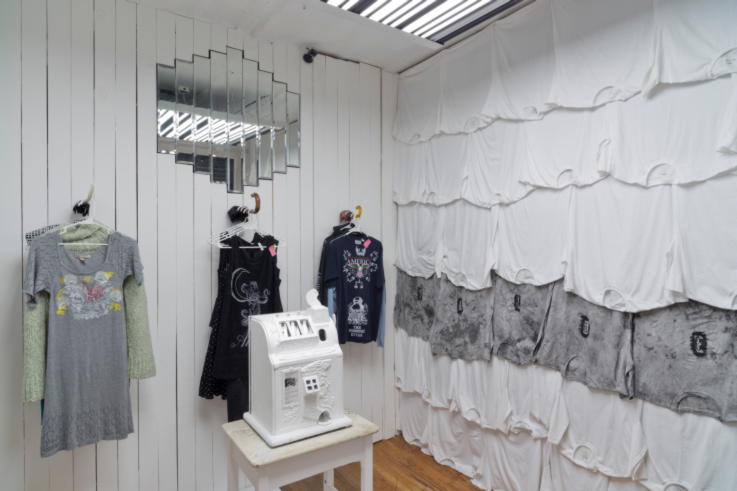
How did you go about setting up the shop?
I knew I wanted to create a democratic shop, not an elitist art gallery. There were three key elements in my mind. The Store would contain subtle anti-consumerist references. The Lounge area would recreate the homely atmosphere of my Art Sundays. The Workshop area would enable anyone to create artwork in the easiest way.
It was such a great period to come up with ideas or designs that had no restriction in terms of justifications or client. I made custom shelving for the blocks using old bakery trays and designed/built a huge barcode light made out of 30 fluorescent tubes. Louise Fili kindly designed a logo which was turned into a hanging banner outside the store. Mostly I used objects I had around the house or came up with.
I had an old pizza chef character that I painted white and became The Inutilious Retailer. I had all my old stamps and signs from Manchester and had owned a 1929 American slot machine since I was a teenager. I decided that the store part would be completely colourless, except for the art made, reflecting the sterility of consumerism. It would be lit by a large barcode because purchasing was the most important element in any store.
The Inutilious Retailer stood in the window, holding ropes which suspended the barcode. The barcode held up a huge panel which stated “COST” as a reminder that buying things comes with so many downsides. On the opposite wall were rows of inverted t-shirts from Fruit of the Loom. Onto some were printed letters which spelled the word “Values” almost as if they were withering on the vine.
In the middle of the room was a school desk, representing the pushing of consumerism to children. On it was the clockwork slot machine, made the year of the stock market crash and the start of the Great Depression. Which I equate to the beginning of modern capitalism’s financial domination of society. The 14 clothes with art on them hung on vintage umbrella hooks coming out of a wall which appeared solid and had a large mirror.
The fact is that umbrellas punched their way through from a hidden, colourful universe. They both infected and improved the sterile consumerist universe. The mirror reflected the light of the barcode but it also provided a first glimpse into another more welcoming place. There were many more subtle digs at consumerism, and things that were not quite as they would be in a normal store. Like the sales tricks used by a retailer, at first glance it seemed an interesting looking new boutique.
A customer once said to me that my store was different because it encouraged you to think, not to buy. That was a great compliment but I reminded them that every store is designed to make you think – to think you should buy something.
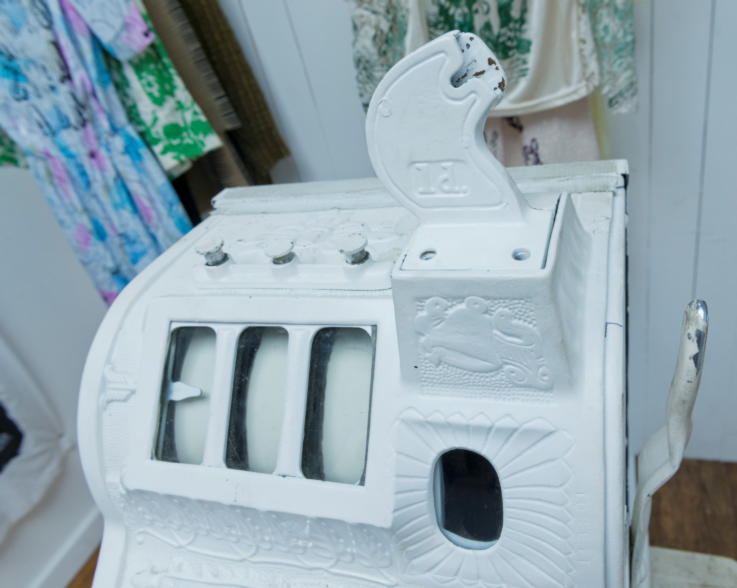
It was a very experiential space – can you tell us about the slot machine and hidden wall?
The dilemma I had was how to connect the front of the store, which was always open but had no sales assistant, with the invisible rear part. The store was designed to filter out those who either weren’t curious enough or had no time to spend creating art.
Many people walked past the store and didn’t notice it. Many looked in but were not interested. Many people walked in the store and were confused if it was an art project or shop or whatever, so left.
I had installed a security camera in the store to deter thieves (only one garment was stolen in 10 months) and people often talked to it. If I heard people in the store I asked “Can I help you?” If they weren’t scared by this abstract voice, I explained that they could have any garment in the store for free. All they had to do was win it by pulling the handle of the slot machine.
When they had pulled the handle I asked them what the reels said. Because the reels were all white, their answer was always “nothing”. I then asked them to pull the handle again but this time use their imagination to tell me what was on the reels. As they pulled the handle I would rotate the wall mirror. When they gave me their answer, they could then see that the wall was false and there was another part beyond it.
I explained they had won the garment and opened a secret door. I then explained that thanks to their curiosity and imagination they had discovered that the store was just the beginning.
They were about to enter an unknown magic universe where they could be like a child again with nobody judging them. One customer described how she was astonished because the store was something you would read about in a book or see in a movie. Not find that it actually exists.
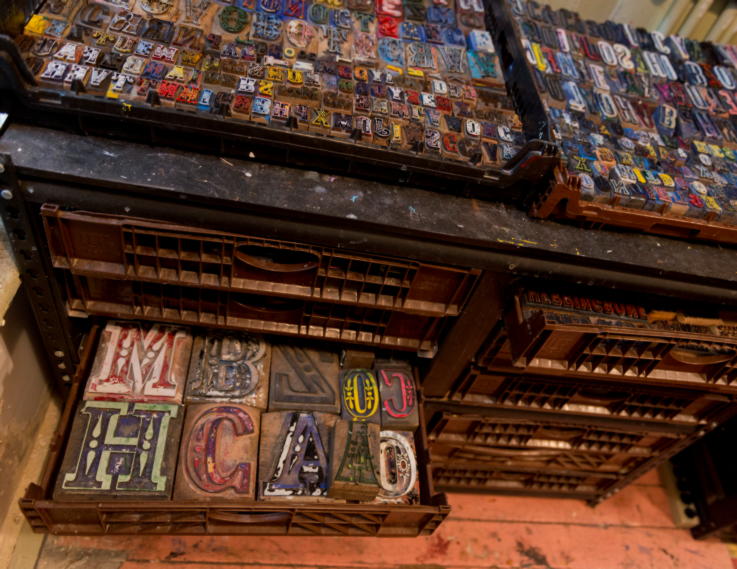
Can you tell us more about the exchange process for ‘buying’ items?
Customers were told that they could have any garment if they came in the back and made another one to replace it. A few people compared it to the idea of Karma or paying forward. It was more about becoming part of a community whose only membership fee was imagination.
By the time people came through to the back, they were completely confused but completely open. I gave them a coffee or glass of wine, showed them how to use the printing blocks and left them to create whatever they wanted.
The remarkable thing was that customers could quite easily daub a cross on a piece of clothing and leave in a couple of minutes. But all of them spent a long time creating a very personal and meaningful piece of art to put out for the next customer.
I explained that there were no pictures to be taken in the back of the store. I believe imagination is a commodity which is becoming rarer as every single thing we see and do in life is documented. If no photos are allowed, the customer had to use their imagination to describe what happened in the store to their friends. They in turn had to use their imagination to try make sense of their bizarre story. Thereby increasing the amount of imagination in the world.
The other rule was that at the end of the process, they would be photographed holding what they made and what they took. Then they would find out who made the art they picked and who picked the art they left behind.
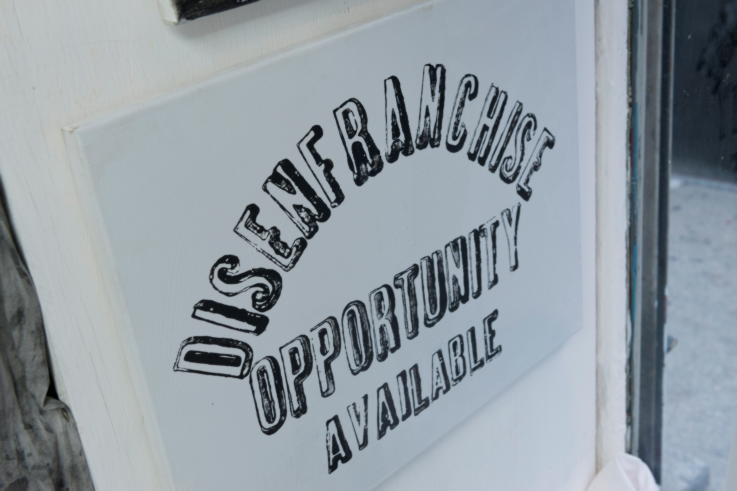
What was it like running the store? How did that work on a day-to-day basis?
The store had a rotating sign in the window which said “May be Open” on one side and “Could be Closed” on the other. There were no set operating hours.
On the always open door was printed “No Expectations” because even if you came in the store, maybe nothing happened. Maybe I was busy in the back with another customer so you were ignored. I didn’t need to sell anything so I didn’t need to encourage any customers.
At the beginning I would get to the store about 10am and chill out in the lounge area until I could hear customers wander in. Ludlow Street where the store was based is now mostly bars and restaurants so the store would often stay open until about 10. Once it became part of the community, it often stayed open until 2am and I would sleep on the sofa.
It was the most rewarding experience of my life to see people’s faces and hear their stories as they went through the process. A worry was that people might think I too was one of those trust fund kids. That somehow this was all set up as market research for a big corporation or full of hidden cameras for a reality TV show. But everyone understood how genuine it all was.
I always had around 20 pieces of used clothing of various types to pick from. There was a book showing which of the 500 or so printing blocks were in each of the 80 drawers. Trays of individual letters meant there were no restrictions on what words could be printed on the clothing. Red, yellow, blue, green, black and white paint was ready in jars so any colour could be mixed.
The customers referred to me as a kind of Willy Wonka or Wizard of Oz character. They had 20 garments x 500 printing blocks x any word in the dictionary x any one of millions of colours with which to create art on a piece of clothing. This was so far off the chart of what they had ever done before that they did so without any preconceived idea of what was right or wrong.
In fact I made it clear to everyone that I would make no judgement or comment on what they wanted to create. I’d only give them technical advice if needed. We would chat about the project and life if they wanted to, otherwise I went back into the lounge area and left them to it.
When they were finished, they had to spend the few minutes while their garment dried, cleaning the blocks and tidying up their mess. I then photographed them in the front of the store holding what they made and what they took. I emailed them the photo immediately as they walked out of the door.
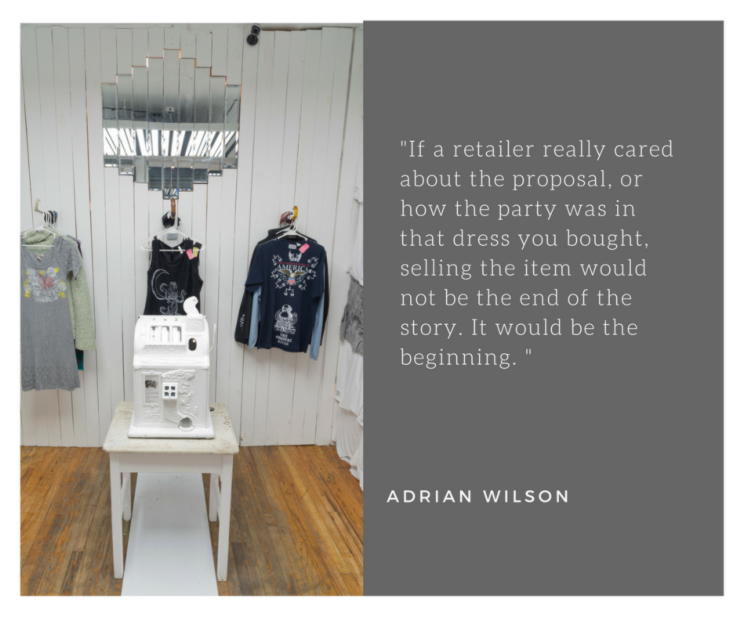
How quickly did the store come together?
I came up with the idea of the store in March and it opened September 1st. The creation process was to let all the experiences I had swirl around and gel. As an artist, I enjoy the problem solving creation process much more than the final piece.
I gave myself a budget of $25,000 to create and rent the store because that was the amount I had put aside for my son’s college. I wanted to open from September 1st 2015 until January 2016 because I hated the idea of being called a ‘pop-up’. That had connotations of a gimmicky, brand promoting concept. I could honestly state that I had a lease “into 2016”.
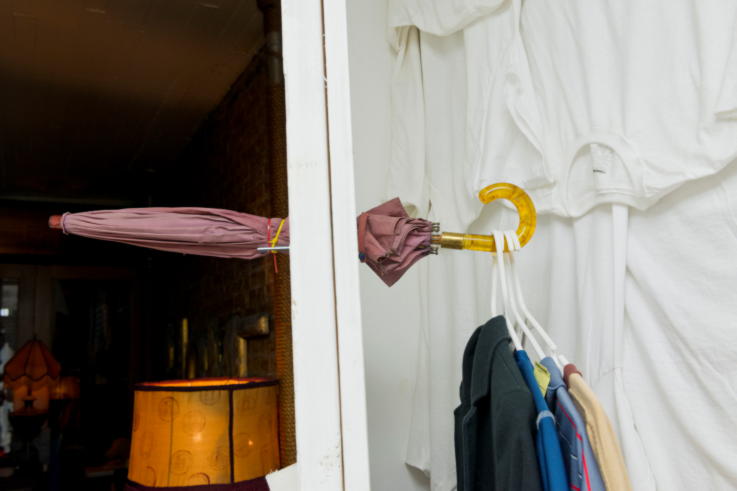
How important was the store’s location to the project?
As we discovered in 2008, America is not a capitalist society because very few people have any capital. The economy is fuelled by consumerism, funded by debt. Debt forces people to work at jobs they don’t like. One way to feel better about having an unfulfilling job is to buy things with the money you earned, which then puts you back in debt.
New York is still regarded as the epicentre of the capitalist world. What better place to plant a kind of retail virus that illustrates that there are ways to break that cycle of consumerism and debt?
The Lower East Side is only a stone’s throw from Wall Street, but is one of the few areas of Manhattan where the traditional type of store still clings on. Stores where things are still made in the back and sold in the front. From bagels to pickles, suits to printed leaflets. These 50 year old community based businesses were being shut down and recreated as “authentic” hipster stores.
I wanted to go into this area and show people exactly what real authenticity was. Create a store which showed big box retailers and trust fund financed hipsters as peddling the same mantra: Buy this, feel better.
I walked up and down two streets, found a perfect looking old store which the landlord agreed to a reduced rent of $17,000 for 4 months. That left me with $8,000 to build the store with.
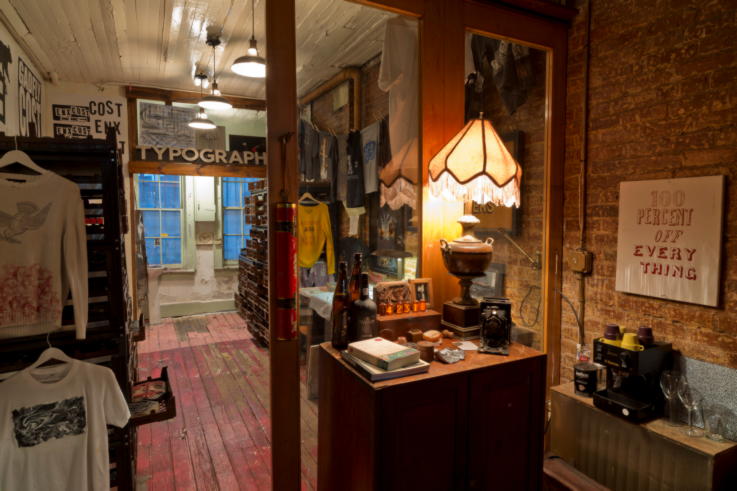
What were the challenges involved in building something like that? What was the cost of set-up?
I spent $500 creating the barcode light. $600 on the banner, $600 on the shelving, $150 for an old sofa, $150 for the mirror, $200 on clothing to paint on, $400 for an old workshop bench, $600 on wood/hardware/paint and $250 for truck rental. The creation and construction whole store cost around $3,500.
Friends helped with heavy moving but I built most of it myself by hand in 2 weeks. The main challenge was keeping the design secret and also building out the store in the heat of mid August. It was a great physical workout.
I had planned to close the store after four months but I enjoyed it so much that I asked the landlord if I could extend the lease. As the building was for sale they agreed and loved my store so much they lowered the already below market rent by 20%. So I was now paying $2,850 for a store which rented for $7,000 a month but also included a basement and private garden.
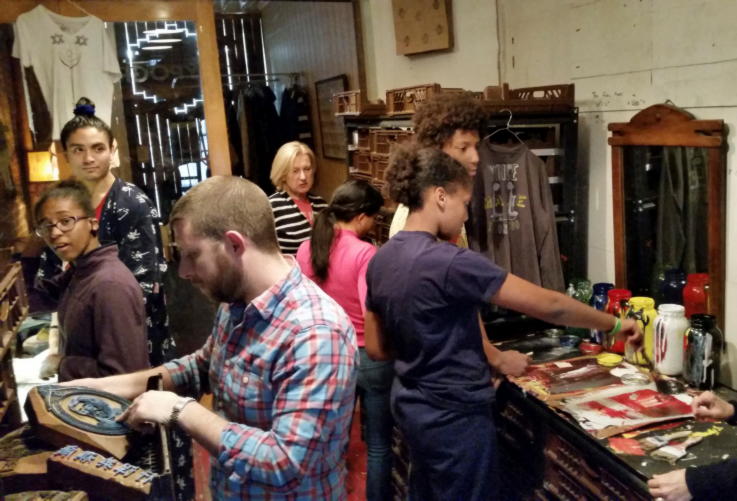
How many visitors did you have/items of clothing were made?
Around 300 people came in the store and did the complete experience over the 10 months I was open. I had special exhibits, including a concert in the store and art events in the garden. So many people would call in, I hardly ever lowered the front security gate.
What did you want visitors to take away from the project?
The first 14 clothes hanging in the store were from Urban Outfitters and Forever 21. I thought it a great idea to take clothing from companies who had blatantly stolen ideas from so many artists and do the same to them. Taking their mass market designs and turning them into one off pieces of art. Once they had been sold, all the garments were bought from the Salvation Army. Partly because the store was about salvation from consumerism but also because every receipt stated “Your Purchase Helps Us Help Others”.
My store was designed to help people. To help them understand the effort that goes into making that object that appears on your doorstep a few days after clicking a button on Amazon Prime. To help them realise that giving something away can give you more pleasure than buying something. To help them understand that if I could open a shop that didn’t sell anything, they had no excuse not to do what they dreamed of.
In short, the aim was like all my other art projects, that money isn’t everything. That there is a big difference between cost and values. That you shouldn’t ask why, you should ask why not?
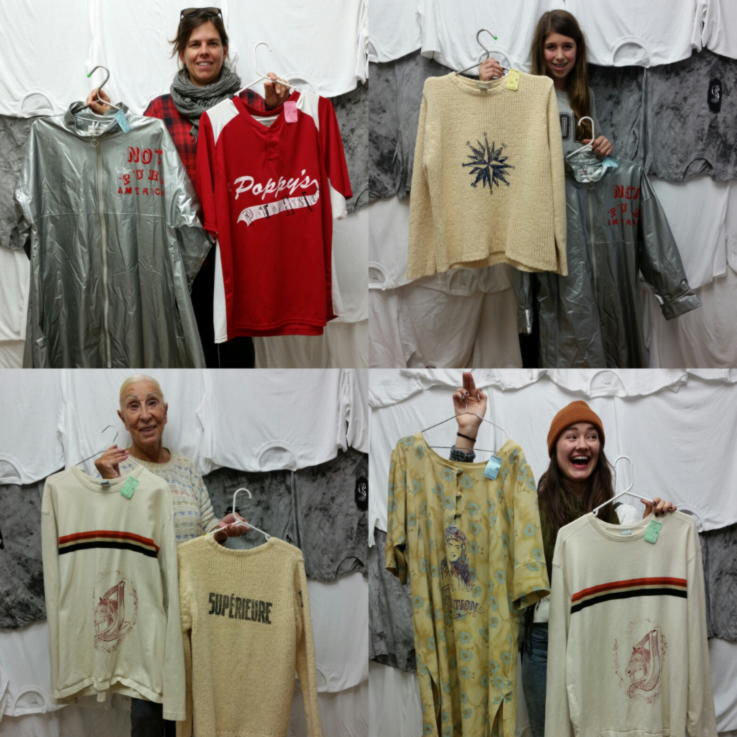
How did people respond to the idea of finding out who made their chosen item and who ‘bought’ the one they made?
The interesting thing, and I would say the most disappointing to admit, is that many people seemingly didn’t care. While in the store they were completely overwhelmed. Many people brought their friends back to the store but didn’t tell them why so they could see their surprise.
Nobody photographed the back of the store. Even editors from the New York Times and the Wall Street Journal who came and made art preferred not to write about it and spoil the secret for others. But New York is full of weird and wonderful experiences. I found that even a week later, customers had often moved on and had little interest.
I understand why people still talk about the store almost as if it wasn’t real. A customer came in a store, picked a garment, went into a secret back part, created a new garment to replace it, was photographed and then left. But that was not what happened at all. People had an indescribable experience. They told me their life stories and secrets in the lounge that acted like a cross between a confession box and a therapist’s couch. People laughed, cried, expressed their feelings in an artistic way and left to join the rat race again.
I know I made them think. But I also know that their lives were often dominated by pressures of work, money and navigating relationships. All of which are more important on a day to day basis than the one hour of escapism and inspiration I provided.
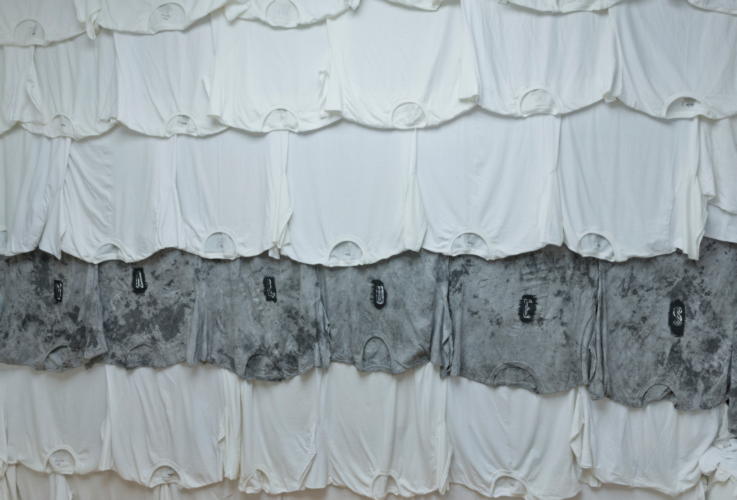
Do you think customers are looking for more of a connection to the products they buy and the people who make them?
We want to know products meet certain standards, are safe, their manufacture isn’t ruining the environment, they aren’t made in sweat shops etc. But we are also lazy and all turn a blind eye when presented with a bargain.
As the store had writ bold, costs and value are poles apart in our world. An idea I had was that you could take a photo with your phone of every bar code and see when, where and who made that dress or that iPod or that burger. Maybe they could get satisfaction getting to know the people who are enjoying the products they created.
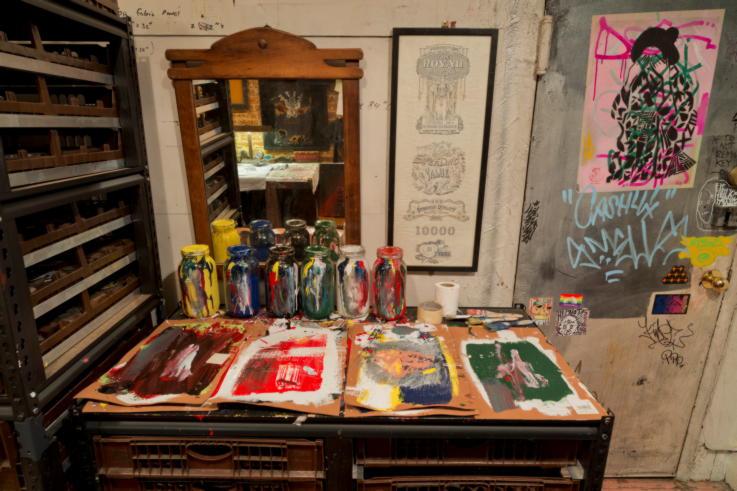
Did you do any marketing or promotion around the space, or was it all word-of-mouth?
Before I opened the store, I was interviewed by a design writer because he had heard about this strange concept of a useless store. During construction, I covered the windows and a few local blogs wrote about this impending ‘store that doesn’t sell anything’ with bemusement. Some presumed I had replaced a mom and pop store but it had been a vintage clothing store then empty for over a year.
One commenter lamented that “No doubt, there will be a line of hipsters outside while James Franco sips bourbon while holding court in the back of the store”. Another stated “I want to smoke whatever the guy who is opening that store is smoking”.
As a single dad who doesn’t use drugs and had no interest in creating a hipster joint, I found all this amusing and a perfect way to avoid popularity. If the store became popular then theoretically, more people would be inspired. And the concept would receive more attention in the art and retail world.
The downside would be that if everyone knew what to expect, then people would line up outside for a chance to pull the slot machine handle and demand they get a free garment. This would be a nightmare and pretty much ruin the experience for everyone. I am glad that the store remained off the radar. Even with visits by journalists, the Chairman of LVMH USA and winning a prestigious International Store of the Year award.
I let the Guardian publish a photo story on the store after six months. That was only because the newspaper was founded in Manchester in 1821 by a textile merchant who would have used the printing blocks himself, so it seemed a perfect circle.
The store developed into two parts. One was the store where people would walk in and create a garment. The other was as a place where people of all types would come and hang out at any and all times of the day and night. The store had become a community centre. I even discovered I had my own secret garden and transformed that with the help of local street artists into a unique spot.
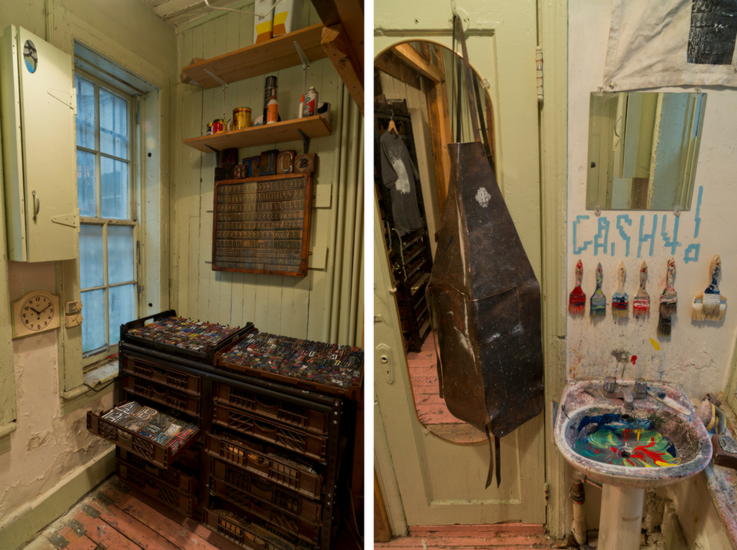
Did you have any other retailers visit or get in touch about the concept? What was their reaction?
There were a couple of visits by Pauline Brown, who was Chairman of LVMH USA at the time. I also had various retail executives visit me from companies like Bulgari and Nordstrom to find out what my little store was all about.
As Pauline put it when she visited and made art for the first time, “This is the first store I have seen that cares what happens after you bought something, rather than emphasise where and how the product was made”. I hadn’t thought of it in that way but she was right.
Another high end jeweller came to visit and I asked them “If I have $10,000 to buy an engagement ring, what is the process?”. She replied that they would take me to a room, give me a glass of champagne, ask about my girlfriend’s preferences and then bring out several rings until I found one I like. “But what about after I bought the ring?” I asked.
She didn’t understand why I was asking that question because after I had left the store with the ring, that was that. I then asked why they wouldn’t ask me to call back in and tell me how the proposal went. Bring my fiancé and share another glass of champagne. Maybe have a website where I could upload photos to show her smiling face? They didn’t do that and that was Pauline Brown’s point.
If a retailer really cared about the proposal, or how the party was in that dress you bought, selling the item would not be the end of the story. It would be the beginning. Because once you signed that credit card bill, all interest in you from the salesperson vanishes, the customer knows all that champagne and feigned interest was just to close the deal. It was all about the money.
Retailers wanted to know how my store was a sustainable business model and I explained. It was my hobby. To pay for my hobby, I pushed myself more as a photographer and worked harder to earn the money to pay for it.
Secondly, as a creative person, it enriched my life and gave me fresh ideas that would improve my photography. Thirdly, the store resulted in a network of people who see me as a genuine, inspiring person who may recommend me to their network for a paid creative project.
I was invited to share my experiences with Wharton Business School. I pointed out that while I may have lost $40,000 in 10 months, that was much lower than many retailers, so why was I having to justify my business model? Would spending $40,000 on a social media PR agency or a BMW to drive to shoots in be a better business model? I doubt it.
For years, bean counters at Toys R Us tried to remove the ferris wheel from their store as it lost money and took up valuable sales floor space. But what is the one thing every child who visited that store remember – a wider variety of merchandise or a ferris wheel?
My store did remind people of the old days. When whatever was made in the back was sold in the front by people who knew their customers by name and were part of the local community. That is not experiential gimmickry, it is real life and something everyone appreciates and relates to.
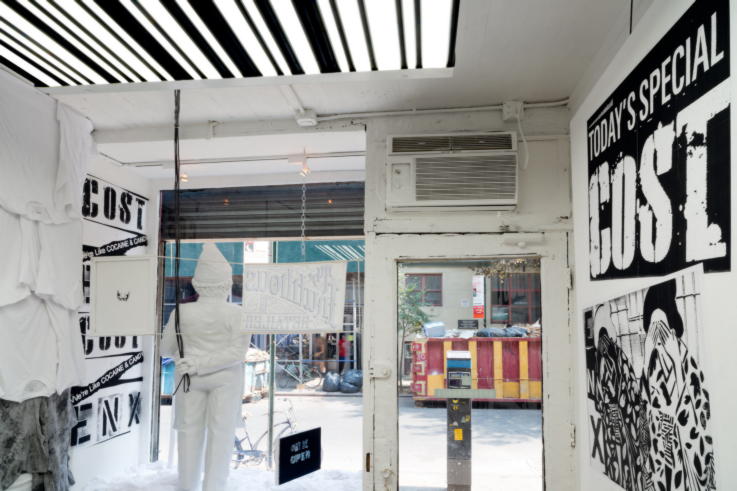
What did you learn from the experience? What would you have done differently?
I learned that people can always spot the difference between real and fake. An eight year old customer said how much she loved the printing blocks because “they are old”. When I said that they could be duplicated on a 3D printer she replied “but they wouldn’t be the same”.
In the same way, people loved that my store wasn’t there to promote or sell them anything. They responded to my altruism in kind. They could see I genuinely cared about them, the community around me and was passionate about the basic pleasures in life. I learned that people want to feel appreciated and part of something bigger.
Nobody came in my store wanting a garment because it was cool or because it looked expensive. I didn’t try and sell them anything, they came to me despite all the filters in their way and at each stage, they felt more intrigued.
One thing that baffled me for a very long time was that out of the 14 garments on display, customers would pick the last thing that had been made around 60% of the time. Statistically the figure should have been more like 5% but I think I know the reason why.
Our brains don’t just know when something is old, it recognises when something is new but those signals have slipped into our subconscious. Why else do customers prefer the latest designed dress or read that day’s news? If you never saw the dress before or heard about the earthquake in Italy that happened overnight, why is our brain no longer as interested when it isn’t new?
I had one customer who came in and couldn’t decide between two garments he liked. One was bright and graphic and simple, the other was feminine and subtle colours. He asked why I was smiling at his dilemma. After he chose one of them I explained it was because the two garments were made the day before by twins.
Nobody had any reason to do anything in my store. But once they were in that strange but safe environment, it became almost like a behavioural research lab.
There is nothing I would have done differently. I was as much a part of the fluidity of the store as the customers were and being open to let the store almost have a life of its own was. The “No Expectations” sign on the door applied to me as much as anyone.
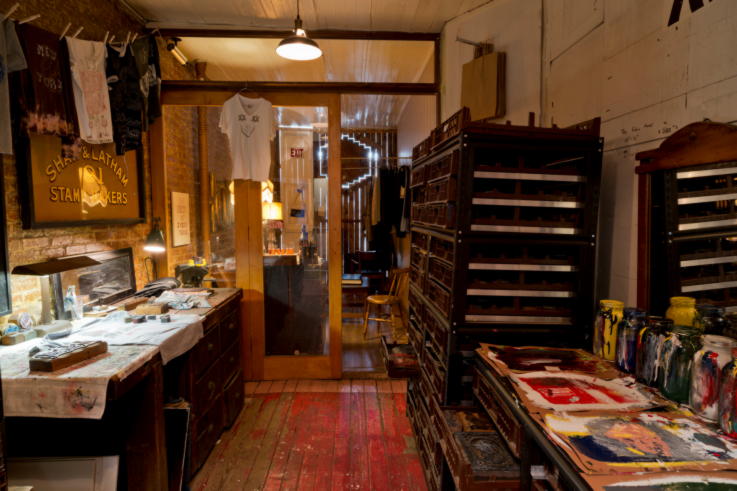
What advice would you give others looking to experiment and try different retail models like this?
Why Not? I designed and opened a shop with no experience that sold nothing. It won RDI International Store of the Year, was a bigger success in so many ways than I ever expected and enriched lots of lives, especially my own. It was not anti-capitalist or anti-consumer, but a reminder that retail is a very broad term that is not just about profit or loss.
So yes, open a store that you are passionate about, set aside time and money to ‘waste’ on showing your customers you really care about them. You may find it may not be the most profitable thing you ever did but I can guarantee it will be the most rewarding. Not least because you didn’t just have a dream, you made it a reality.
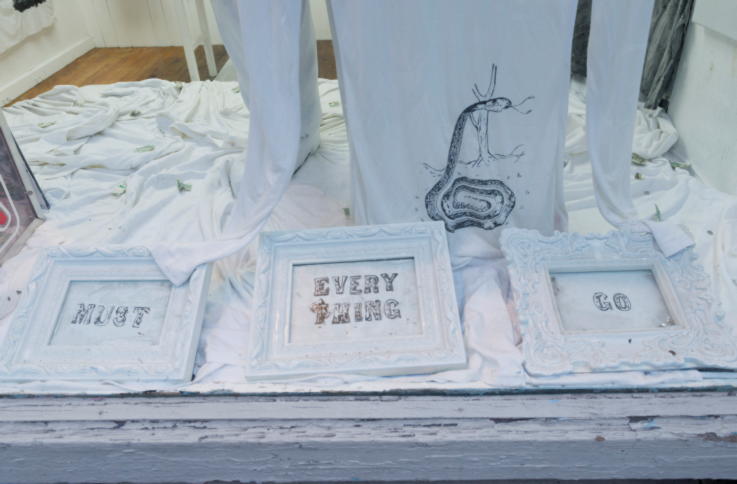
What are you going to do next?
As always, I am taking photographs of amazing stores for clients who not only appreciated my store, but also inspired and funded it.
The Inutilious Retailer will next appear in mobile version. I am saving to buy an old food truck-sized vehicle and fit it out like the store inside using just the stamps that were popular. I can then drive it to wherever I want – an inner city school one day or a fancy part of town the next, and not have the expense of renting from a landlord.
I am happy to share my experiences running a ‘useless’ store. There are two documentaries on The Inutilious Retailer in the works shot by customers who fell in love with what it represented.
Of course, who knows where else this ‘terrible business model’ may lead…
Images courtesy of The Inutilious Retailer

